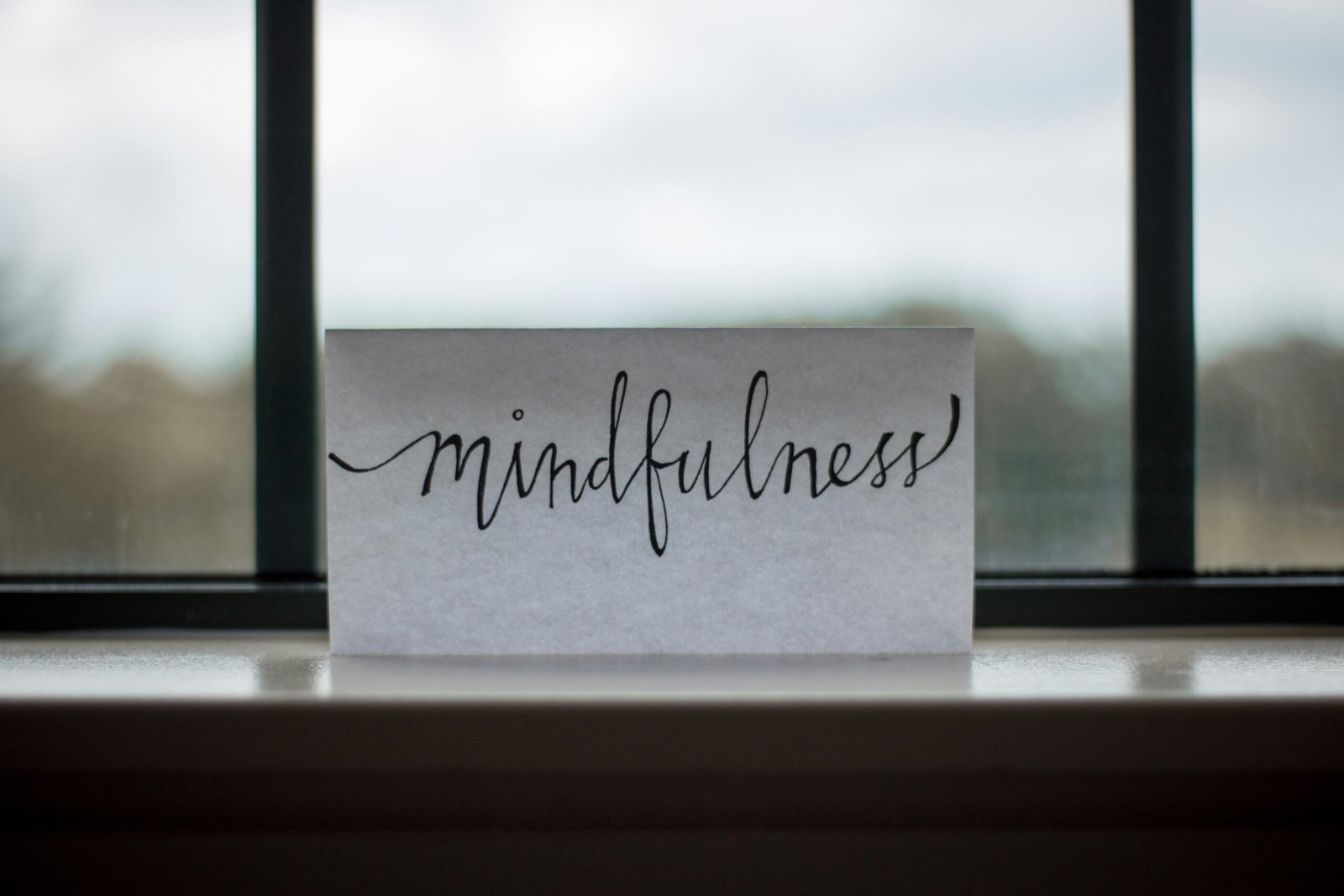
How Millennials Can Practice Mindfulness in a Hyperconnected World?
Have you ever felt overwhelmed by the constant stream of notifications, messages, and emails that bombard your phone, laptop, or tablet every day?
Do you find yourself scrolling mindlessly through social media, news, or entertainment sites, only to realize that you have wasted hours of your precious time?
If you answered yes to any of these questions, you are not alone.
Many millennials, much like yours truly, the generation born between 1981 and 1996, struggle with the challenges of living in a hyperconnected world, where information and distractions are always at their fingertips.
While technology has undoubtedly brought many benefits and conveniences to our lives, it has also created a lot of stress, anxiety, and dissatisfaction.
According to a 2018 survey by the American Psychological Association, millennials are the most stressed generation, with 48% of them reporting that they feel anxious or depressed at least once a week.
Moreover, a 2019 study by Deloitte found that millennials are the least happy generation, with only 29% of them saying that they are satisfied with their lives.
So, how can millennials cope with the negative effects of technology and find more happiness and fulfillment in their lives?
One possible answer is mindfulness.
Mindfulness is the practice of paying attention to the present moment, with openness, curiosity, and acceptance.
Mindfulness can help us become more aware of our thoughts, feelings, and sensations, and reduce our reactivity to external stimuli. Mindfulness can also help us cultivate gratitude, compassion, and joy, and improve our relationships with ourselves and others.
Mindfulness has been scientifically proven to have many benefits for our mental and physical health.
According to a 2017 review by the University of Oxford, mindfulness can reduce stress, anxiety, depression, and pain, and enhance well-being, cognition, and performance.
Furthermore, a 2018 study by the University of California, Berkeley, found that mindfulness can “increase the gray matter volume in the brain regions associated with learning, memory, and emotion regulation”.
Now the biggest question.
How can we practice mindfulness in our busy and hectic lives?
Fortunately, mindfulness does not require a lot of time, money, or equipment.
All it takes is a willingness to try and a commitment to practice.
I am sharing some practical strategies for cultivating mindfulness in everyday life which I have used in my own life.
Mindful Eating

Eating is something we do every day.
But often without much awareness or appreciation!
We tend to eat fast, while multitasking, or while distracted by our devices.
This can lead to overeating, under-eating, or eating unhealthy foods, and missing out on the pleasure and nourishment that food provides.
Mindful eating is the practice of eating with Attention, Intention, and Enjoyment. It involves paying attention to the sensations, flavors, and textures of the food we eat, and noticing how it affects our body and mind.
It also involves avoiding distractions such as phones, TVs, or computers while eating, and eating slowly and deliberately, savoring each bite. Mindful eating can help us improve our digestion, regulate our appetite, and enhance our satisfaction with food.
How to do it?
To practice mindful eating, I follow these steps:
- Start by choosing a meal or a snack that you enjoy and setting aside some time to eat it without any interruptions.
- Before you eat, take a moment to look at your food, and appreciate its color, shape, and smell.
- When you eat, take a small bite, and chew it slowly, noticing the taste, texture, and temperature of the food.
- As you swallow, observe how the food travels down your throat, and how it makes you feel.
- Repeat this process with each bite, until you finish your food or feel full.
- After you eat, take a moment to reflect on your experience, and thank yourself for taking care of your body.
Mindful Walking

Walking is another activity that we do every day, but often without much awareness or appreciation.
We tend to walk fast, lost in our thoughts, while thinking about the past or the future, or while distracted by our devices. At least, I was before I started following mindful walking.
This made me miss the opportunity to connect with my own body and my surroundings and enjoy the benefits of physical activity.
For information I come from a small mountain town and so walking was a thing for a good part of my daily routine. But unfortunately, mindlessly!
Mindful walking is the practice of walking with Awareness, Curiosity, and Appreciation. It involves noticing the movement of our feet, legs, and arms, and how they coordinate with each other.
It also involves observing the sights, sounds, and smells around us, and being aware of our breathing and our emotions. I now miss the fresh air, birds chirping, lush green tress swaying in the wind as now I live in a busy city, where everything stimulates your brain except nature, or should I say, the lack of it!
Mindful walking can help us improve our posture, balance, and coordination, and reduce our stress and tension.
Remember that low back ache. Yes, that can disappear if you practice mind full walking. Mine did!
How to do it?
To practice mindful walking:
- Start by choosing a time and a place where you can walk comfortably and safely, without any interruptions. You can walk indoors or outdoors, depending on your preference.
- As you walk, pay attention to the sensations in your feet, legs, and arms, and how they move in sync with each other. Notice how your feet touch the ground, and how your weight shifts from one foot to the other. Feel the muscles in your legs and arms contract and relax, and the blood flow through your veins.
- As you walk, also pay attention to your surroundings, and the stimuli that reach your senses. See the colors, shapes, and patterns of the objects around you. Hear the sounds of nature, traffic, or people. Smell the scents of flowers, food, or pollution.
- As you walk, also pay attention to your breathing, and how it changes with your pace. Notice the rhythm and depth of your breath, and how it fills your lungs and chest.
- Finally, pay attention to your emotions, and how they change with your walking. Are you feeling happy, sad, angry, or calm? How does walking affect your mood?
Mindful Commuting

Commuting is something that many of us do every day, but often with a lot of stress, frustration, or boredom.
We tend to view commuting as a waste of time, or a source of annoyance, and we try to escape it by listening to music, reading, or checking our phones.
I can picture a bust SkyTrain in downtown Vancouver with everyone lost in their cell phones with those fashionable Air Pods stuck into their ears isolating the brain from every great sensation the body can enjoy. They call it immersive! It should be more like Drowning!
This habit is making us miss the opportunity to practice mindfulness, and to use our commute time as a chance to relax, reflect, or learn.
Mindful commuting is the practice of commuting with Awareness, Acceptance, and Interest. It involves focusing on our breathing, listening to soothing music or a podcast, or scanning our body for any tension or discomfort. It also involves accepting the reality of our commute, such as the traffic, delays, or crowds, and not letting them affect our mood or well-being.
Mindful commuting can help us reduce our stress, anxiety, and anger, and increase our happiness, gratitude, and curiosity.
How to do it?
To practice mindful commuting:
- Start by choosing a mode of transportation that suits your needs, preferences, and budget. You can commute by car, bus, train, bike, or foot, depending on your situation.
- As you commute, pay attention to your breathing, and how it changes with your speed, direction, or altitude. Notice the rhythm and depth of your breath, and how it fills your lungs and chest. Try to breathe deeply and slowly, and exhale fully.
- As you commute, also pay attention to your body, and how it feels in relation to your vehicle or environment. Notice any sensations of pressure, temperature, or vibration. Scan your body for any areas of tension or pain, and try to relax them.
- As you commute, also pay attention to your surroundings, and the stimuli that reach your senses. See the colors, shapes, and patterns of the landscape, buildings, or people. Hear the sounds of engines, horns, or conversations. Smell the scents of exhaust, perfume, or food.
- As you commute, also pay attention to your emotions, and how they change with your commute. Are you feeling impatient, anxious, or bored? How does commuting affect your mood?
Mindful Coloring or Doodling

Coloring or doodling is something that many of us enjoy doing, but often without much awareness or appreciation.
We tend to color or doodle for fun, relaxation, or creativity, but we may not pay much attention to the process or the outcome. This can make us miss the opportunity to practice mindfulness, and to use coloring or doodling as a way to express ourselves, explore our emotions, or discover new insights.
Mindful coloring or doodling is the practice of coloring or doodling with Attention, Intention, and Enjoyment. It involves paying attention to the colors, shapes, and patterns that we choose, and how they reflect our mood, personality, or preferences.
It also involves avoiding any judgments or expectations and letting go of any attachment to the result.
Mindful coloring or doodling can help us improve our concentration, creativity, and confidence, and reduce our stress, anxiety, and depression.
How to do it?
To practice mindful coloring or doodling:
- Start by choosing a paper or a device, and a tool or an app, that you like, and that suit your skill level and style. You can use a coloring book, a blank sheet (avoid digital canvas) and a pencil or a pen depending on your choice.
- As you color or doodle, pay attention to the colors, shapes, and patterns that you create, and how they relate to each other.
- Notice the contrast, harmony, and balance of your composition.
- As you color or doodle, also pay attention to your emotions, and how they change with your coloring or doodling. Are you feeling calm, excited, or curious? How does coloring or doodling affect your mood?
Conclusion
Mindfulness is a powerful practice that can help millennials cope with the challenges of living in a hyperconnected world, and find more happiness and fulfillment in their lives.
Mindfulness can be practiced in everyday activities, such as eating, walking, commuting, or coloring or doodling, by paying attention to the present moment, fostering a deeper connection with our surroundings and inner experiences.
When eating, savor each bite, noticing the flavors, textures, and sensations that arise. Feel blessed that you have been granted the food and the neural capacity to enjoy that food.
While walking or commuting, focus on the sensation of each step or the rhythm of your breath, grounding yourself in the present journey rather than being lost in thoughts of the past or future. Feel the air around you and the ground beneath your feet.
Engaging in coloring or doodling can become a meditative practice, allowing the mind to relax and unwind as you immerse yourself in the creative process. Get lost in the fountain of colors and explore your inner self.
By integrating mindfulness into these routine activities, we cultivate a greater sense of awareness, peace, and fulfillment in our daily lives. It’s like doing Yoga on the move.
In this article, we have explored what mindfulness is and how it can help millennials cope with the challenges of living in a hyperconnected world. We have also shared some practical strategies for practicing mindfulness in everyday activities, such as eating, walking, commuting, or coloring or doodling. By applying these strategies, you can improve your mental and physical health, boost your productivity and creativity, and enhance your happiness and well-being.
But don’t just take our word for it.
Try it for yourself and see the difference.
Mindfulness is not a one-time thing, but a lifelong journey. Incorporate it in your daily routines and reap its endless benefits.
The more you practice, the more benefits you will reap.
So, what are you waiting for? Start your mindfulness journey today and discover a new way of living.
Do you have any questions or comments about mindfulness? Do you have any other tips or suggestions for practicing mindfulness in a hyperconnected world? Let us know in the comments section below. We would love to hear from you. 😊







